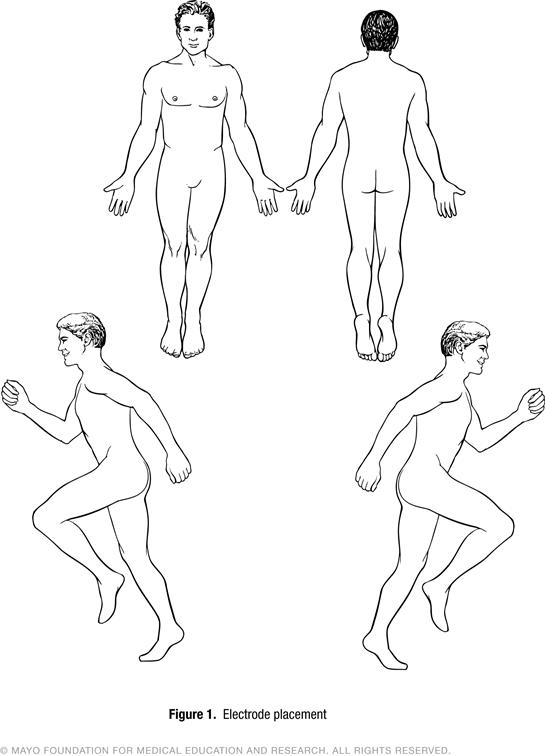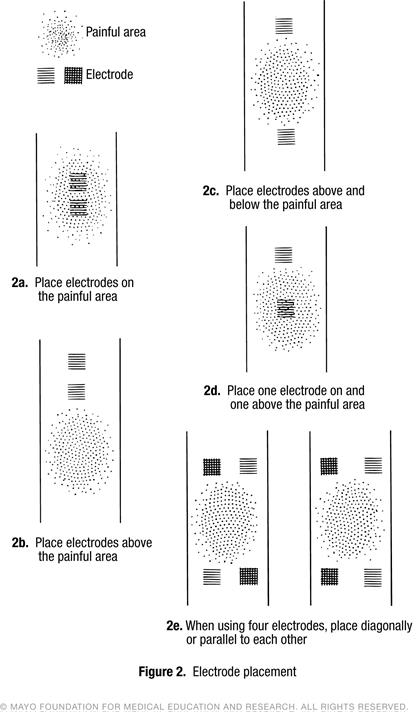Transcutaneous Electrical Nerve Stimulation (TENS)
Introduction
Transcutaneous electrical nerve stimulation, or TENS, can help to relieve and reduce pain. Exactly how TENS relieves pain is not known, however, medical scientists believe that electrical impulses disrupt pain sensations passing through the spinal cord or the affected area of the body. Electrical stimulation is also thought to trigger the nervous system to produce substances called enkephalins and endorphins that naturally reduce pain.
The battery-operated TENS unit is portable, and about the size of a deck of cards. The unit is comprised of a small 9-volt power pack attached to electrodes that send electrical impulses through the skin. The impulses stimulate underlying nerves and cause a mild tingling sensation.
It is important to know that TENS can benefit some people and relieve or reduce some, but not all, types of pain. Additionally, the TENS device will not give you an electrical shock.
Preparing to use TENS
To ensure that you receive the most pain relief possible, your health care provider will:
- Instruct you in how to use your TENS device.
- Determine appropriate settings for your device.
- Determine the most effective placement of the electrodes.
Before the TENS electrodes can be placed, you must prepare your skin to improve the stimulation to the targeted nerves and reduce the chance of skin irritation. In addition, preparing your skin extends the useful life of the electrodes.
Before applying the electrodes, take the following steps to prepare your skin:
- If instructed by your health care provider, trim excess body hair from the area to stubble where the electrodes will be placed.
- Wash the site with mild soap and warm water.
- Dry the skin before applying the electrodes.
- Do not place electrodes on cut, broken, freshly shaven or irritated skin.
- Change the location of the electrodes every day or two to prevent possible skin irritation from the electrode adhesive.
- If your skin becomes irritated, remove the electrodes and stop using TENS. Consult your health care provider before using the electrodes again.
Applying the electrodes
Self-adhesive electrodes are most commonly used with the TENS device. These adhere to your skin without additional adhesive tape or gel. Carbon electrodes are another type of electrode you may use with your TENS device. Carbon electrodes require a small amount of gel between each electrode and the skin. These electrodes are kept in place with adhesive non-allergenic tape. Place the electrodes in the spots your health care provider has noted on Figure 1.
| Electrodes that have been used many times will deliver less stimulation than desired and will shorten the life of the battery in your TENS unit. Check the manufacturer’s instructions about how to care for electrodes and when to replace them. |

Turning on the TENS device
Follow these steps to turn on the TENS device:
- After you have applied the electrodes, adjust the dials to the settings your health care provider recommends before turning on the unit:
Recommended setting: __________
- Turn on the TENS unit as instructed by your health care provider.
- Leave on the TENS unit for __________ minutes.
- Turn the TENS unit off when the designated time is over.
- When the TENS unit is off, remove the electrodes.
- TENS may be used __________ times per day.
What to do if the TENS device loses its effectiveness
If the TENS unit no longer seems effective, try the following:
- Check the instruction manual for possible solutions to problems with the unit.
- Check to make sure the battery in the unit is fully charged.
- Check with your health care provider about changing the settings.
- Change the position of the electrodes. Try different positions to find those most effective. Suggestions are shown in Figure 2.

Precautions
Follow these precautions when using the TENS device:
- Do not sleep while using the device.
- If you are pregnant, discuss this with your health care provider before using the device.
- If you have a heart condition or pacemaker, discuss this with your health care provider before using the device.
- Inform your health care provider of all medications and supplements you are taking before using the device.
- Discuss other health conditions, if any, with your health care provider before using the device.
How to contact your health care provider
If you have questions about TENS or about this information, talk with your health care provider.
